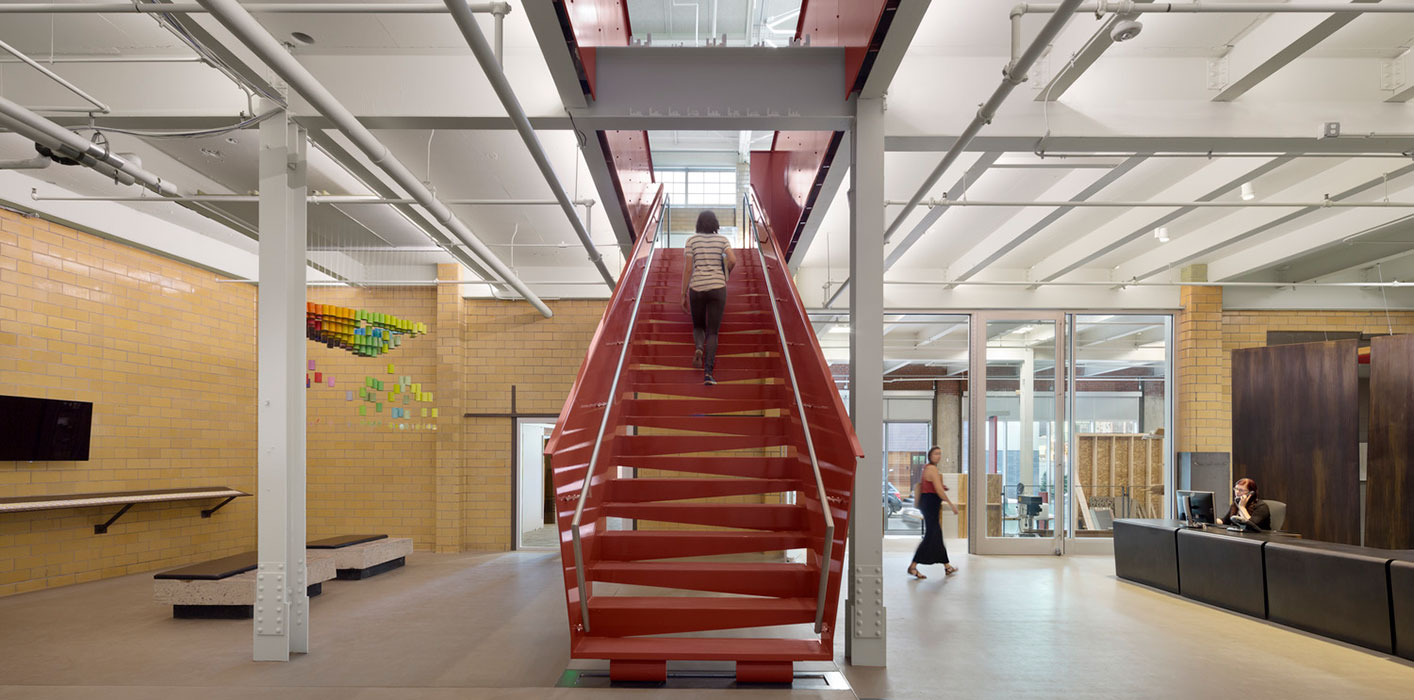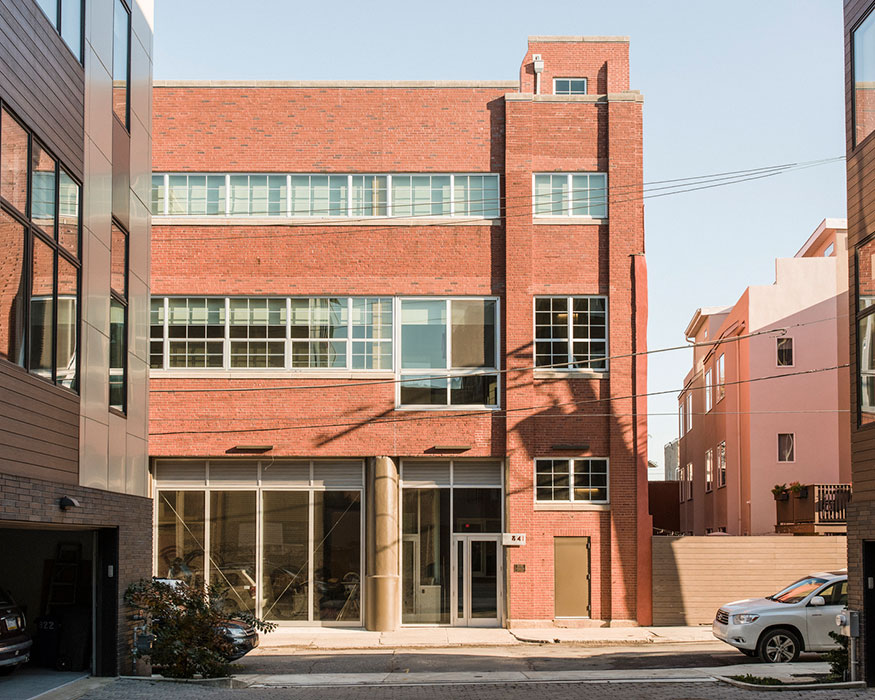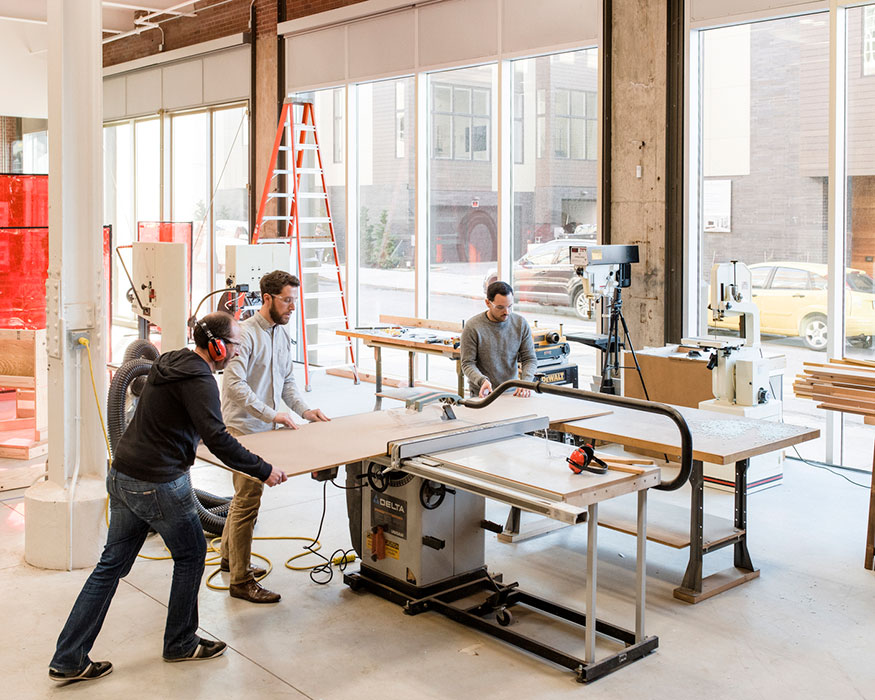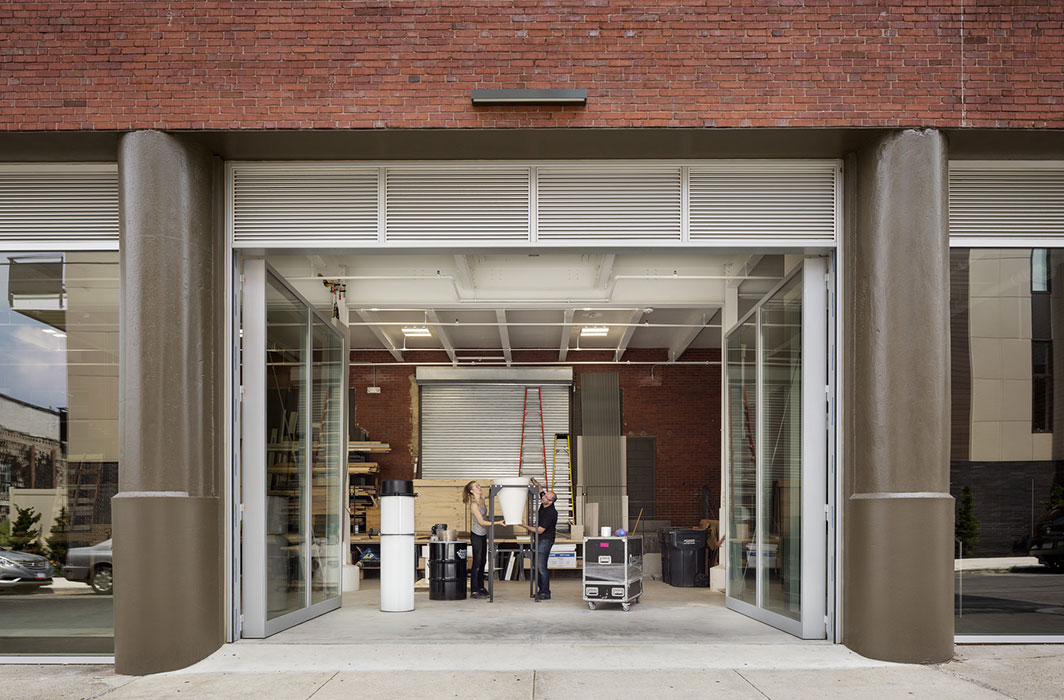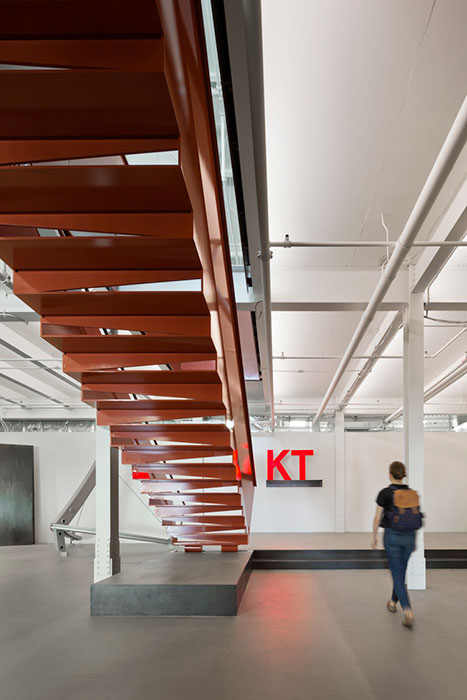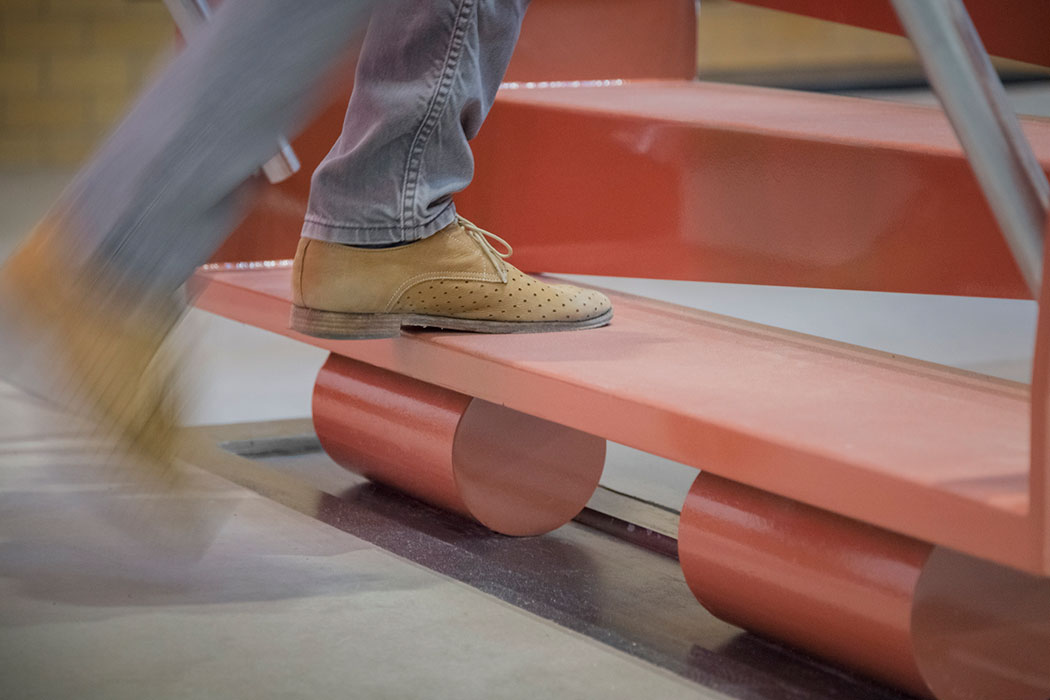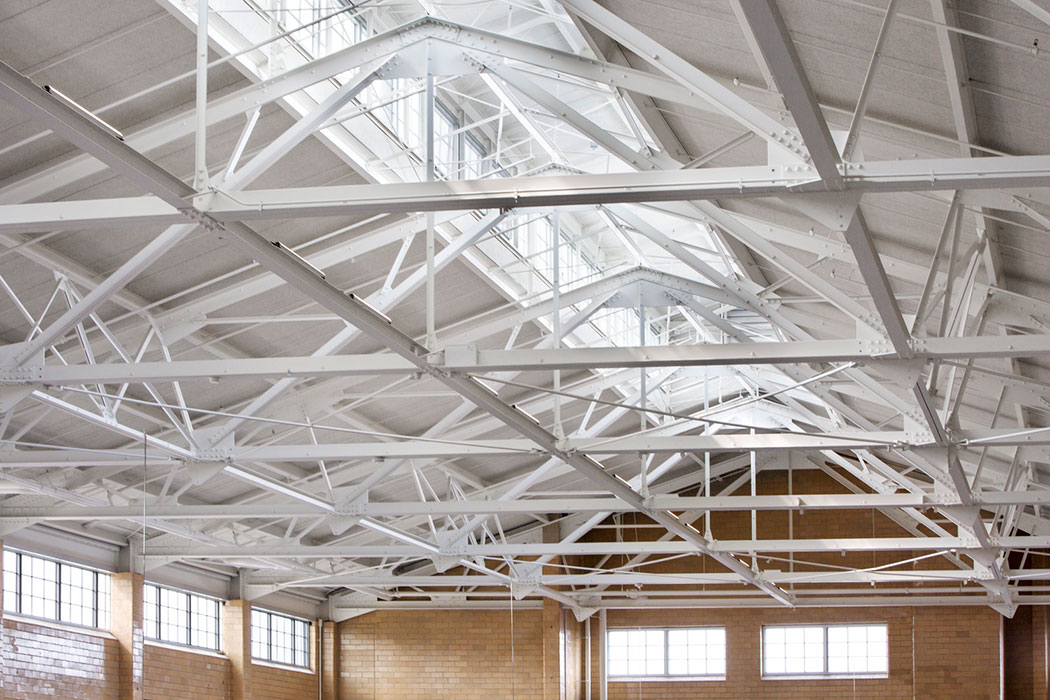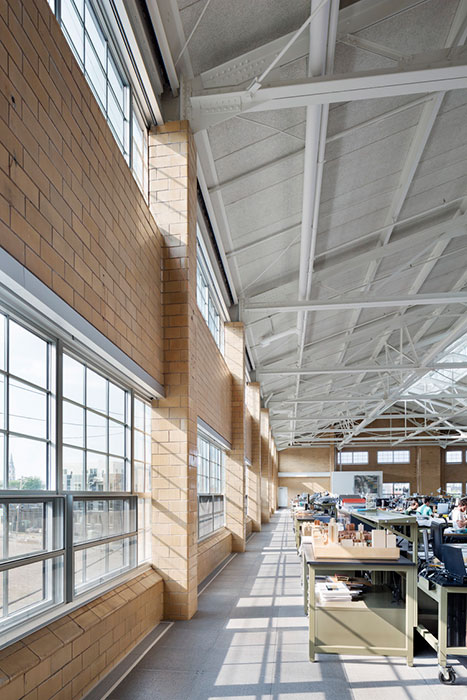How can we combine historical integrity with sustainable technologies to create a flexible and dynamic home for our growing firm?
A restored bottling plant now serves as KieranTimberlake's office and fabrication space.
© Chris Leaman
Faced with a growing firm and an increasing need for a fabrication lab, model making shop, and additional breakout spaces, KieranTimberlake began searching for a new office and testing ground in 2012. During their search, partners Stephen Kieran and James Timberlake came across a former beer bottling plant that was well-suited for an imaginative retrofit and also offered the opportunity for the firm to undertake an ambitious experiment in sustainability: could such a large, industrial building be outfitted to achieve a comfortable working environment using as little energy as possible?
A NEIGHBORHOOD LANDMARK
The historic structure, built in 1948, was once part of the Ortlieb's Brewing Company complex in the Northern Liberties neighborhood of Philadelphia. Designed by Richard Koelle, a student of Paul Cret at the University of Pennsylvania, the factory blends the International style popular in post-war industrial and institutional buildings with Philadelphia's traditional brick palette. Despite this unique aesthetic, a majority of the original brewery buildings, including the one across the street, had been torn down to make way for new condos. Hoping to extend the building's life cycle and preserve the history and character of a rapidly changing neighborhood, the firm chose to adapt the existing building to meet its needs.
Ortlieb's Bottling House, built in 1948, was once part of the Ortlieb's Brewing Company complex, a dense residential and commercial district north of Center City Philadelphia.
SUSTAINABLE PRESERVATION
Because the firm's design process is grounded in research and sustainability, the building's design incorporates a number of sustainable strategies to reduce energy use, many of which involved the restoration of some of the building's original features. Constructed in the days before air conditioning, the original factory was built to be self-ventilating with an open floor plan and lofty ceiling that allow heat to rise from the first to the second floor before exiting the building through operable monitor windows that run the length of the building. To take advantage of these existing features, the firm restored the monitor and replaced the building's existing windows with fully operable, thermally broken sashes. These renovations, along with a new roof made of highly efficient Structurally Insulated Panels (SIPs), help keep the building's energy profile low by passively ventilating or rejecting much of the solar heat the building would otherwise absorb. The restored monitor and windows also track daylight like a sundial, ensuring that the office is naturally well lit even on cloudy days. When artificial lighting is required, LED task lights are used to create an effective nighttime lighting solution that reduces energy consumption and heat gain.
In addition to renovations and restorations, the building uses a number of passive heating and cooling technologies to ensure a comfortable yet sustainable work environment. Operable shades help minimize or maximize solar heat gain depending on the season, while year-round the building management system uses data from both an indoor sensor network and a rooftop weather station to determine whether exterior temperatures are lower than interior temperatures. During the spring, summer, and fall, higher exterior temperatures or humidity levels will automatically close windows and activate fans to remove latent heat and prevent additional heat gain. These strategies have been largely successful and in its second year of occupancy, the building's energy use was less than half of that of a comparably sized office.
Though the building's sustainability and energy efficiency was of high importance, the firm also wanted to maintain the factory's original aesthetic. This respect for the building's history is reflected through the restoration and reuse of fundamental elements remaining from the structure's factory days. For example, the exterior brick, interior glazed brick walls, roof monitor, original piping, and industrial doors were all restored, and a former loading dock was converted into a fabrication shop that puts the shop's operations in full view and reflects the firm's emphasis on hands-on experimentation.
A sensor network installed throughout the building tracks temperature and relative humidity to allow heating and cooling plans to be acutely adjusted in response to daily conditions.
A 21ST CENTURY WORKSPACE
While much of the original details were preserved, new features were added to support the firm's fluctuating, collaborative office culture where ad-hoc teams reorganize quickly and frequently. The second floor office plan is flexible, open, and non-hierarchical to encourage collaboration. Conference rooms and breakout spaces with writable walls flank the east side and are separated from the office by moveable partitions that also serve as pin-up space. To promote hassle-free mobility, the floor on this level is made up of tiles raised on a stilt-like platform. Because air vents, sensors, data, and electric wiring are located beneath the flooring, wheeled furniture with integrated computer equipment can easily be rolled to new locations and plugged into embedded consoles when teams reorganize.
An open floor plan and movable furniture allows teams to reorganize swiftly, and individuals to customize personal work spaces easily.
© Michael Moran/OTTO
The retrofit process blended the building's history with the firm's needs to create a flexible space well-suited to 21st century workflows. The building and its interiors thus play a supporting role to the firm's work, acting as a shell in which an ever-shifting variety of experiments take shape.


